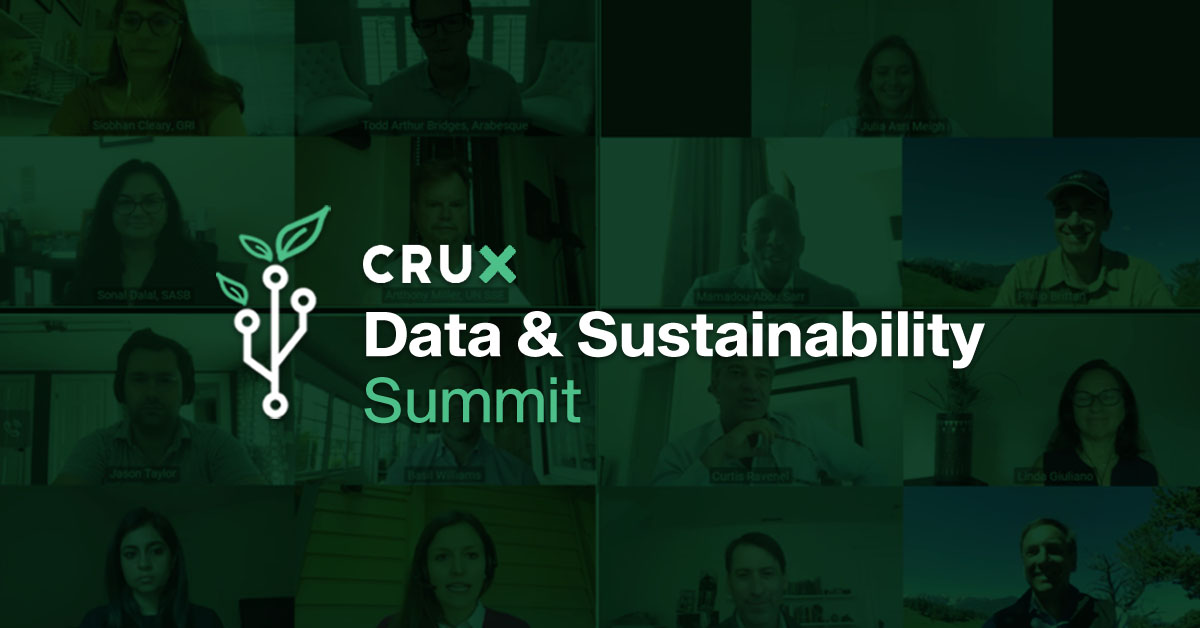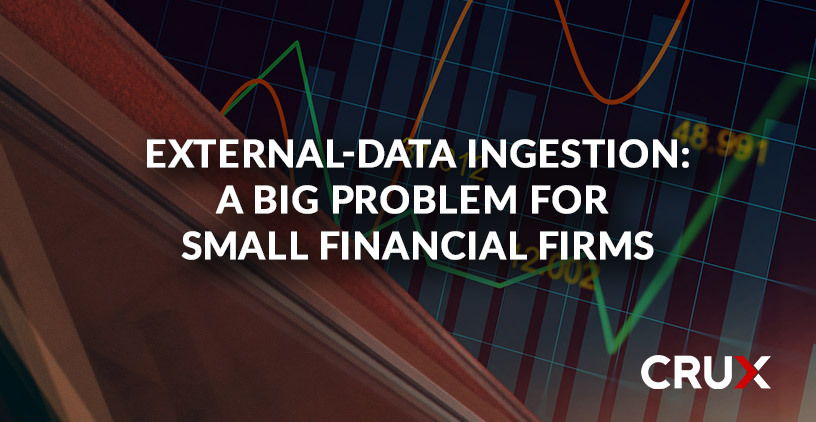What Cloud Marketplaces Do and Don’t Do
Not long ago, we observed here in our blog that the critical insights that drive business value come from data that is both (1) fast and (2) reliable.

Energy use is at the crux of sustainability. The Crux Informatics inaugural Data & Sustainability Summit took place on June 23rd and 24th, 2020. The two-day event featured 25+ of the leading experts and thought leaders in the sustainable technology and ESG investing sectors.
Sustainability and ESG investing continue to be a core focus for financial institutions. Profitability, cultural alignment and operational efficiencies are a few of the leading drivers behind the focus on sustainability and responsible investing. Sustainability offers a long-term solution to a problem that needs solving now, but it works two-fold– firms must see opportunities for sustainable investments, but also understand a change must come from within.
Here’s one problem. The carbon footprint of information and communications technology is currently measured to be 2% of global emissions, and expected to grow to 8% by 2030 with firms spending approximately 80% of their data resources in repetitive data processing, storage and management work, and only 20% on data science. At Crux, we see a way to solve this problem by building better processes that avoid duplicative or inefficient data and enable more efficient data usage. A great opportunity exists for companies to find their own sustainable path, from hyperscaling their cloud-based infrastructure to incorporating different ESG metrics to better define success.
The first wave of socially responsible investing happened during the civil rights and social movements of the 1960s, specifically by defunding Agent Orange. Later, in 2005, we saw a materiality wave where ESG data could be measured and shown to be consistent with fiduciary duty. It revealed that a long-term breach of ESG principles will result in weakening of relationships with investors. Now, we have increased pressure from government organizations demanding disclosure and enhanced reporting from corporations. Recent EU taxonomy and regulations are prime examples of this trend. With growing civil society concerns, the disclosure environment today is more mature than ever before. Many corporations believe they need to take action due to real material risks associated with social concerns.
Financial companies are beginning to understand the business benefits of having science-based data targets for emissions in their own supply chain. Sustainability is also a higher priority when evaluating investments as they now can be measured more deeply, to the level of individual devices, and this is changing how firms are doing business.
Moving to the cloud can provide greater efficiency for companies. But it’s also important to know if cloud providers are using renewable energy or new tools for monitoring the use of energy. It’s incumbent on more companies to take account of their emissions and energy usage and the rise of ESG investing is forcing companies to take greater stock of their data consumption.
Many firms are now realizing that ESG is not just about values, but about making better investment decisions. With more insightful and accurate ESG scoring, more financial firms see clearly the links between strong ESG performance and strong risk and return. According to one panelist, since the pandemic, one financial institution analyzed around 20 subsections in the energy space and ranked by carbon intensity. They saw a near-perfect correlation with valuation based on the criteria.
Often discounted as being the lesser letter in ESG, largely due to it being more difficult to measure, the “S” which stands for social, has vaulted to the top of the list. After a series of global social and health crises, such as the pandemic and the Black Lives Matter movement, companies and sovereigns that neglect diversity & inclusion and avoid solutions to serve communities, will be perceived as risky. New metrics in the S-space will provide a deeper understanding of company performance. ESG funds are on the rise as investors realize that companies have to do better — particularly when it comes to the social aspect of ESG mandates during the Black Lives Matter movement.
The ESG data landscape is deeply fractured in terms of standards and scoring, however it is looking to be increasingly possible to have a merging of streams among standards bodies and data suppliers. Everyone wants common metrics of performance and that reality is a long way off, but more transparency and collaboration are resulting in recent progress and collaboration to put the right steps in place to achieve this goal.
We look forward to our next Summit. Thank you to all who participated.
View all session replays here.

Not long ago, we observed here in our blog that the critical insights that drive business value come from data that is both (1) fast and (2) reliable.

This past year has been exciting, representing the dawning of a new age for artificial intelligence (AI) and machine learning (ML)—with large...

How do you get white-glove customer service from a major data supplier?